Wireless temperature sensor
Introduction to Wireless Sensors
Wireless sensors are standard measurement tools equipped with transmitters to convert signals from process control instruments into a radio transmission. The radio signal is interpreted by a receiver which then converts the wireless signal to a specific, desired output, such as an analog current or data analysis via computer software.
More information about our wireless range.

Learn more about Wireless temperature sensors
What are the primary benefits to using wireless sensors?
Safety
Wireless instruments can be used in locations that are difficult to access due to extreme conditions such as high temperature, pH, pressure, etc. Using wireless sensors, operators can continuously supervise processes in hazardous environments and report the data back to an operator in a monitoring facility located at a safe distance away. Wireless measurement is also useful for obtaining data in hard to access locations.
Convenience
Wireless sensors can be used to form a web/network that would allow an engineer to monitor a number of different locations from one station. This provides a centralized control of a factory. Additionally, a number of wireless sensors have the ability to create a unique web page making up-to-the-minute data, accessible anywhere in the world.
Reduce Costs
Wireless process control can reduce the cost of monitoring and running a factory by eliminating the need for extension wire, conduit, and other costly accessories.
All of OMEGA's wireless products expand upon the capabilities of traditional wired sensors and controllers. OMEGA's extensive line of products includes wireless meters and transmitters that have built-in displays, alarms, and controllable outputs. Switching to wireless instruments will provide convenience and capability.
Choose the right wireless sensor for your application
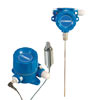 Wireless Transmitters
Wireless Transmitters
Transmitters use scientific sensors such as thermocouples, pressure transducers, flow meters, etc. to measure a specific property in a process, and then transmit the data via radio signals to a receiver.
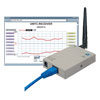 Wireless Receivers
Wireless Receivers
Receivers receive and interpret the wireless data. The receiver 'reads' a radio signal and converts it into the desired output such as contact closure, analog output, or digital display; some receivers can even export the data to advanced software.
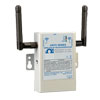 Transceivers
Transceivers
Transceivers contain a transmitter and receiver in a single unit. The ability to rebroadcast signals makes wireless transceivers able to extend the range of your wireless measurement network.
Frequently Asked Questions
Selecting a Wireless Sensor
There are a number of items to consider when selecting a wireless measurement instrument.
Type of Measurement: It is important to understand what is being measured. Wireless transmitters (which incorporate wireless process measurement and control) typically have a unique function. Sensors are specifically designed for temperature, pressure, flow, etc., and must be selected accordingly.
Accuracy and Response Time: How accurate does the measurement need to be, and how quickly should the measurement be updated? Most wireless sensors are as accurate as their wired counterparts; however the readings are typically transmitted every few seconds to preserve battery power. If instantaneous measurement is necessary, this must be taken into consideration when selecting the wireless transmitter because certain models may not offer the desired response time.
Range: The range of wireless sensors varies widely. Some are designed for short-range, indoor applications of a few hundred feet, while other sensors can transmit data to a receiver located miles away. Regardless of the sensors capability, the range of a wireless signal is always limited by obstructions. Transmitting through machines, walls, and structures degrades signal strength and reduces range capability. As a result, the range of a transmitter located indoors is typically significantly less than the same transmitter broadcasting outside in wide open field.
Frequency: The frequency of radio transmission is also important to consider. Laws vary by country and region as to which parts of the wireless spectrum are available for use without specific licenses. In the USA 915MHz, 2.4GHz (WiFi) are the major frequencies factories can use to transmit signals. As part of the industrial, scientific, and medical band, users do not need a radio license to operate on these frequencies. In Europe, wireless products typically operate on 868MHz or 2.4GHz. Due to regulatory requirements, products may only be available in certain regions.
Wireless | Related Products
↓ View this page in another language or region ↓
 CLOSE
CLOSE





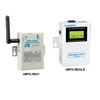
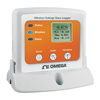
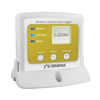

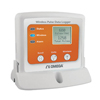
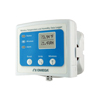

 Sensores sem Fio
Sensores sem Fio Senseurs Sans Fil
Senseurs Sans Fil Sensores Inalámbricos
Sensores Inalámbricos Sensores Inalámbricos
Sensores Inalámbricos Wireless Sensors
Wireless Sensors Trådløse Sensorer og Transmittere
Trådløse Sensorer og Transmittere Capteurs et Transmetteurs Sans Fil
Capteurs et Transmetteurs Sans Fil Drahtlose Sensoren
Drahtlose Sensoren Trasmettitori e Sensori Portatili
Trasmettitori e Sensori Portatili Wireless Sensors
Wireless Sensors Sensores Inalámbricos y Transmisores
Sensores Inalámbricos y Transmisores Wireless Sensors
Wireless Sensors Wireless Sensors
Wireless Sensors Wireless Sensors
Wireless Sensors
 무선센서
무선센서 Wireless Sensors
Wireless Sensors
 Wireless Sensors
Wireless Sensors
 Wireless Sensors
Wireless Sensors
 Wireless Sensors
Wireless Sensors
 Wireless Sensors
Wireless Sensors